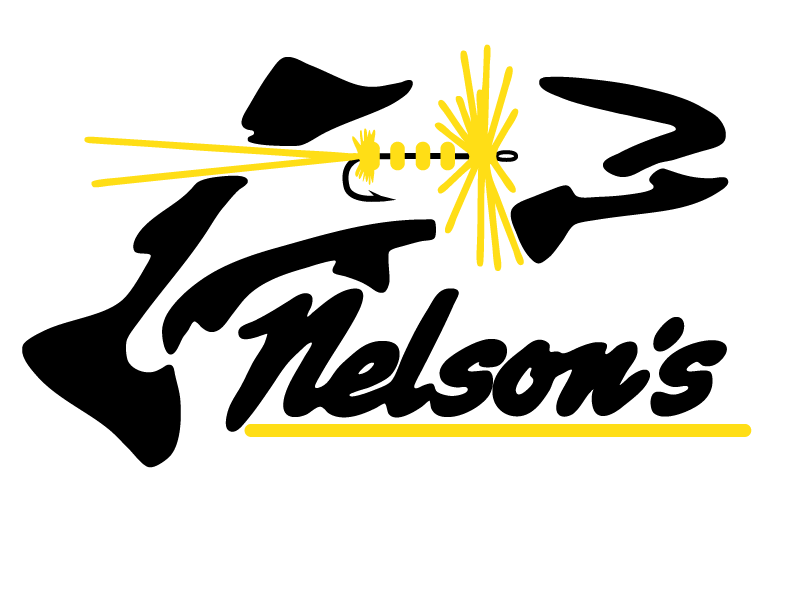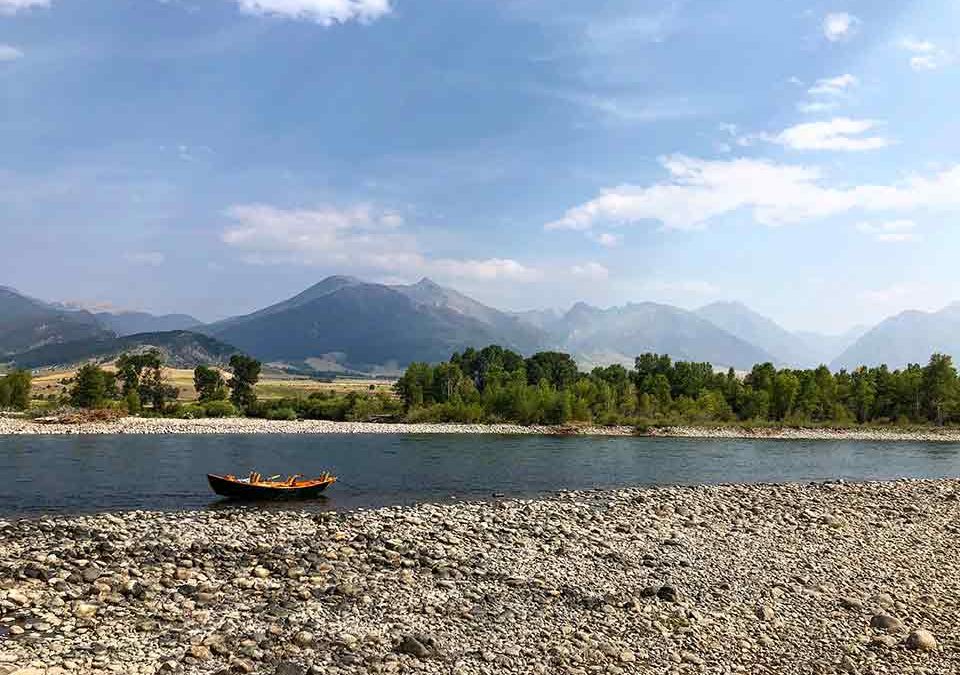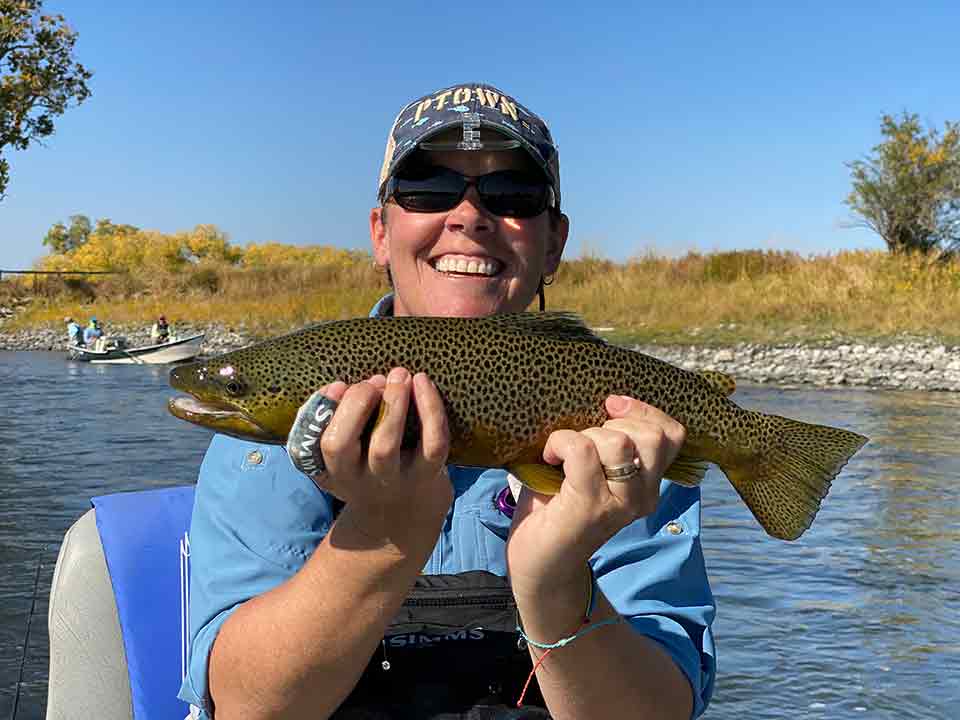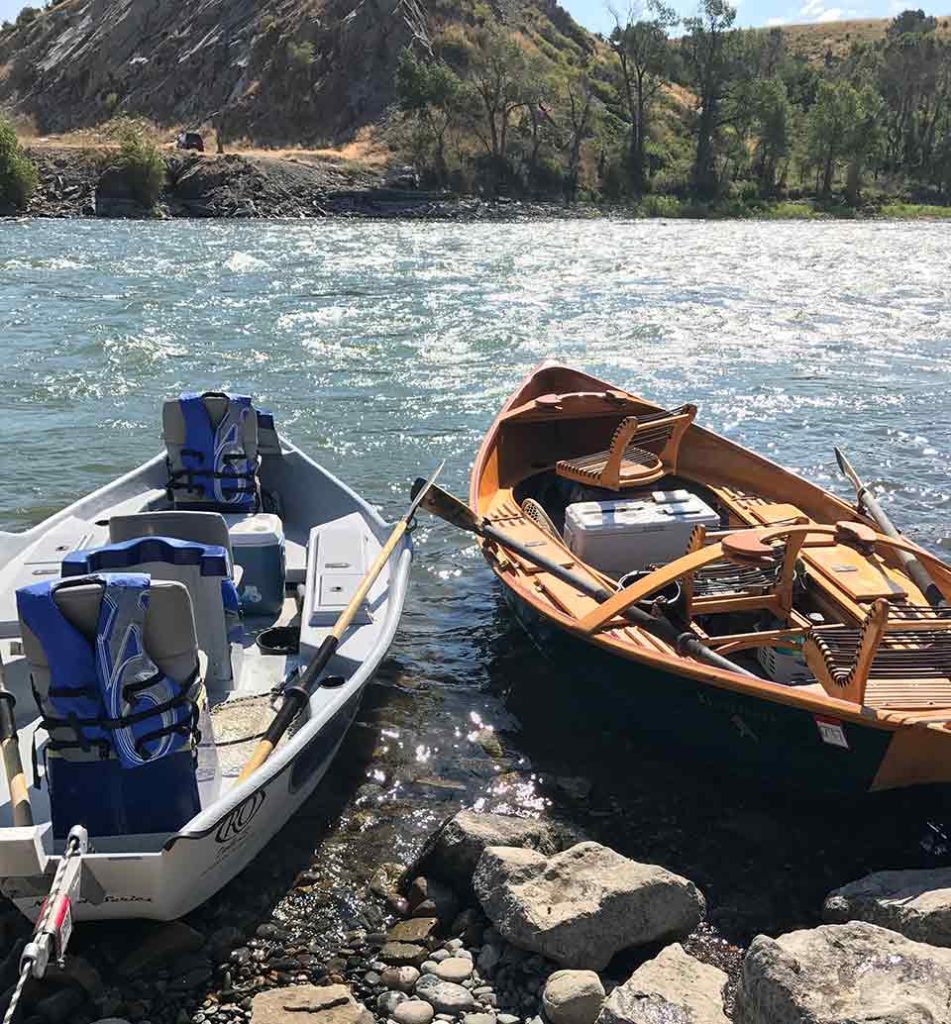When fly fishing from a boat, the fishing will be done along seams, around rocks, through corner rifles, adjacent to shelves, and in buckets. Fly fishing from a boat also requires an ability to read water, understand drifts, and competent line management. The best option an angler who wants to fish from a boat has is to hire a guide to take the helm.
Written by: Tucker Nelson of Nelson’s Guides & Flies
Covering water increases the chances of catching fish. More fish see the fly as more trout real estate is prospected. The best way to cover large portions of water during the day is from a boat. The one draw back is someone needs to row, but rowing is a blast for those who know how to do it. As the modern saying goes “If you row you can go!”. The best option an angler who wants to fish from a boat has is to hire a guide to take the helm. Fly fishing from a boat requires an ability to read water, understand drifts, and competent line management.
Fly fishing from a boat allows the angler to prospect the potential hang outs and deduct where the fish are living on that particular day.
Trout have evolved to use all the variables in their environment to their advantage. Good anglers learn to identify the locations in the river where the variables all come together to form ideal trout habitat. Variables change throughout the year as flows oscillate, temperatures fluctuate, and bug life shifts. For instance, during high flows trout tend to crowd the banks and sit in the slow backwaters in order to get out of the strong current. However, as flows moderate the trout will spread back out into the main channel. Fly fishing from a boat allows the angler to prospect the potential hang outs and deduce where the fish are living on that particular day.
When fishing from a boat the fishing will be done along seams, around rocks, through corner rifles, adjacent to shelves, and in buckets. A seam occurs wherever two currents come together. The collision creates oxygen, churns up bugs, and minimizes current strength. Rocks offer refuge from strong current on both the front side and back side and also creates current seams behind the rock. A corner riffle forms when the river bends. The water usually flows over a shallow rock shelf, or riffle, and then drops into a deeper hole. On the inside of the main riffle where the current slows exists the corner riffle. Riffles are constantly turning up bugs and creating oxygen. The trout reside throughout the riffle when feeding and use the “corner” to rest from the strength of the main current. Shelves occur where the water depth changes abruptly and can occur anywhere throughout the river channel, but are most often seen along the banks of the river. Trout use the deeper water for protection and will move into the shallower water to feed. Depending on the time of year and as river flows change, the rower will place the boat at different distances from the bank to fish the shelf. Buckets are depressions in the stream bed and happen through out the river channel. It helps to know where the buckets are, but they can be identified by looking for changes in water color and are great places to find wary trout residing. A boat allows the angler to fish the buckets that can not be accessed by wading. Drifting in a boat enables the angler to fish the numerous river features covered above in a single day.
Drifts and techniques that may be employed
The best way to understand drifts is looking at the artificial fly from a fish eye’s view. First, determine what insects are around and most likely available to the trout. Next, think about how the water current influences the movement of the bug as it drifts. Smaller insects are greatly influenced by the force and direction of the current, while larger insects and small bait fish are able to move in the current. Lastly, identify the point in the drift of when the bug is most vulnerable to trout. Trout are conditioned to recognize the above traits and it helps them determine what is or isn’t food. The job of the angler persists of not only accurately matching the sought after bug, but also presenting the bug to the fish in a manner consistent with how it interacts with the water current. Due to the small size of most insects relative to the strength of the current, the most common presentation used is referred to as a “dead drift”. When implementing a dead drift the goal of the angler revolves around eliminating the influence of the fly line on the drift of the fly by mending. If the current pulls the fly line the fly will move in an unnatural way referred to as “drag”. Mending is the practice of minimizing drag by moving the fly line either upstream or downstream, depending upon the location of the fly relative to the strength of the current, without moving the fly out of the target area. Drifting in a boat allows the angler to implement very long drifts, as long as the fly stays in the target zone with minimal drag. Other drifts and techniques that may be employed while fishing from a boat are slow swings, stripping, fly twitch, or a combination.
In order to correctly execute the proper drifts and maintain the ability to hook the fish, the angler must practice competent line management. When fishing from a boat there are many fixtures to tangle the excess fly line around. It’s important to keep all the line on the reel except for the fly line needed to make a cast and maintain a proper drift. Excess fly line is also a problem when it’s on the water. There is a fine line between too much line and not enough line. Too much line makes it hard to get tight to the fly when setting the hook and impedes the anglers ability to hook the fish. Not enough line causes drag on the fly and produces ineffective mending. During the coarse of a float proper line management becomes the factor of whether or not the fish are hooked or missed.
If you don’t own a boat consider hiring a guide from Nelson’s Guides & Flies to take you out. The guide takes care of the rowing and helps with teaching proper boat fishing techniques along with identifying the correct places to fish. If interested, you can also pick up a few rowing tips from the guide. Fly fishing from a boat is a great way to spend a day on the water and enjoy the changing landscapes while drifting down the river.



